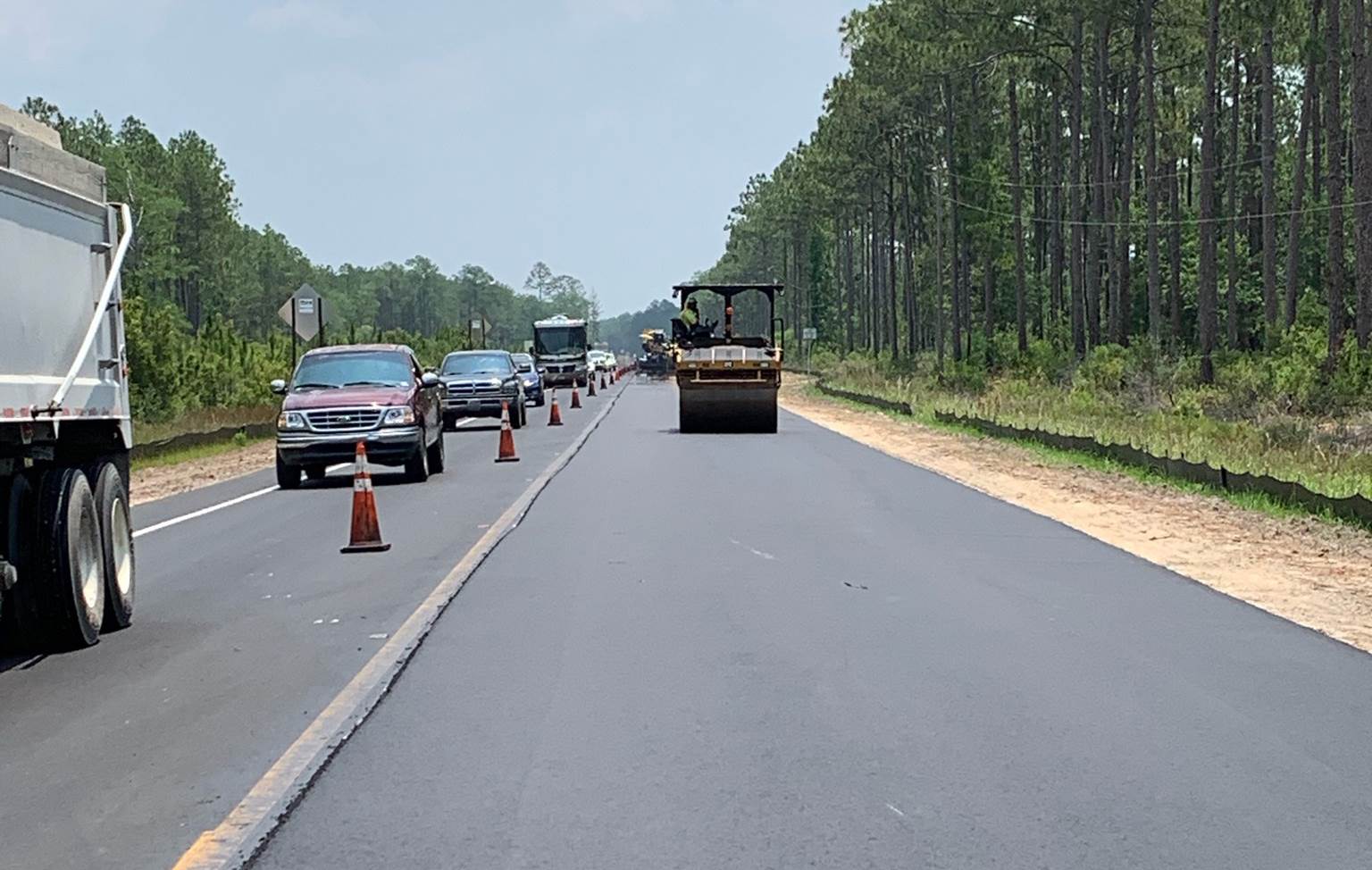If you’ve ever driven across Florida’s Panhandle, there’s a good chance you’ve traveled on U.S. 98, which is Florida’s longest numbered route, an important east-west connector within the state and a designated hurricane evacuation route. Part of U.S. 98 includes State Road (SR) 30 in northwest Florida’s Wakulla County. SR 30 is a coastal highway that connects area residents, communities and visitors to the region’s businesses, parks, coastal areas and beaches.

Hanson worked with the Florida Department of Transportation’s District 3 to resurface, restore and rehabilitate a 6-mile section of U.S. 98 State Road (SR) 30 from the St. Marks River to the Jefferson County line in Wakulla County, Florida.
SR 30 sees a high percentage of truck traffic; over time, the heavy, consistent volume of trucks caused some severe ruts to occur on SR 30. The road was also settling in spots, developing potholes over deteriorating cross-drain pipes.
SR 30 is in the Florida Department of Transportation’s (FDOT) District 3. FDOT determined that a 6-mile section of SR 30 from the St. Marks River to the Jefferson County line needed repairs, including resurfacing, restoration and rehabilitation. The project scope encompassed travel lanes, truck pull-offs, paved shoulders and drainage. FDOT needed a comprehensive solution, and Hanson approached the challenge from all angles.
Partnering with FDOT’s District 3, Hanson provided transportation engineering, including highway design, traffic operations and structural engineering, to rehabilitate and restore SR 30. To keep motorists, pedestrians and bicyclists safe, the team improved safety elements, such as upgrading guardrails, correcting cross slope and providing audible and vibratory treatments, such as standard thermoplastic markings with ground-in rumble strips to provide lane departure warnings.
Drains, detours and design
One of FDOT’s highest priorities included replacing the weakening cross drains at three locations where the large concrete pipes had separated at the joints and caused seepage, siltation and roadway failures.

Replacing large concrete cross drains at three locations along SR 30 was a high priority during this roadway rehabilitation project.
This wasn’t a small effort. It involved significant underground construction alongside and underneath the roadway. Construction crews replaced five 36-inch-diameter reinforced concrete pipes and three 48-inch-diameter reinforced concrete pipes. The team also checked all drainage structures for erosion, function, scour, sediment accumulation and structural integrity.
During construction, maintaining two-way traffic through the work zone at all times was a critical component. The project team produced a temporary traffic control plan that involved constructing special detours to shift both lanes of traffic in phases. The on-site detours included temporary sheet-pile walls and allowed the cross drains to be replaced and the existing roadway to be reconstructed.

Hanson used a phased approach to maintain traffic in the work zone during construction.
Because the project was in a sensitive environmental area that included wetlands and karst regions, coordinating environmental aspects was critical to completing the project and protecting the natural area. Karst regions are often characterized by limestone or dissolving rock, which may include sinkholes, underground streams and caverns.
“Construction projects in this area must follow criteria to avoid impacting existing karst areas and prevent sinkholes from forming in the project area. Because we’ve worked in this area on similar projects, our familiarity and experience helped us collaborate with local permitting agencies to meet the environmental permitting requirements,” said Brian Lemieux, P.E., a vice president, senior project manager and regional manager who works at Hanson’s Bonifay, Florida, office. Brian served as the project manager, leading Hanson’s efforts on the project.
Hanson also submitted permits for impacts to wetlands to the Florida Department of Environmental Protection and U.S. Army Corps of Engineers.
“It was great to work on a project that was so important to the safety of people using this route. Working together with FDOT’s District 3, our efforts helped make SR 30 more durable and safer for those traveling through this corridor while protecting the beautiful, natural environment in Wakulla County,” Lemieux said.
For more information about this project or how Hanson can help you with your next roadway project, contact Brian Lemieux, P.E., at blemieux@hanson-inc.com.